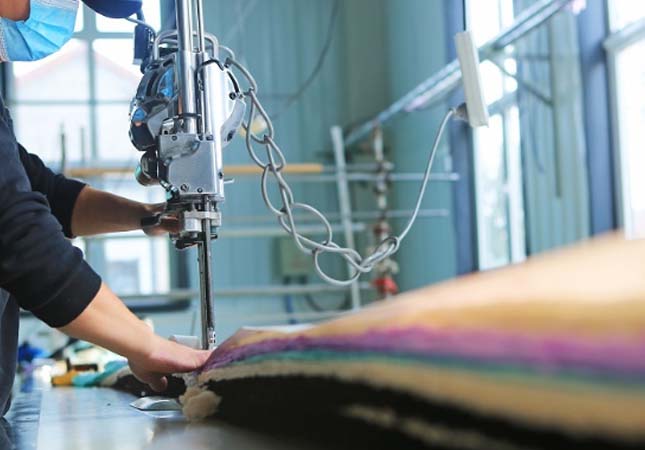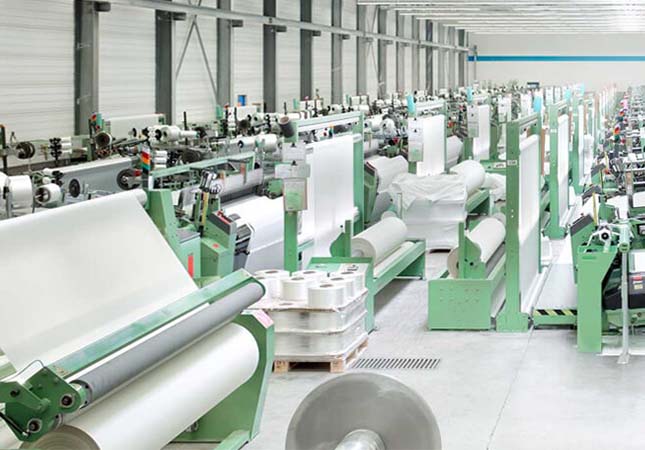The textile industry has come a long way from its humble beginnings as a manual craft to a global manufacturing powerhouse. One of the key catalysts behind this transformation has been the development of textile machinery. Today, let's delve into the fascinating journey of textile machinery, exploring its evolution, groundbreaking inventions, and the remarkable impact it has had on the textile industry.

The Industrial Revolution and the Birth of Textile Machinery
The industrial revolution of the late 18th century marked a turning point in the textile industry. Prior to this era, textiles were primarily produced by hand, with labor-intensive processes limiting production capacity and increasing costs. The need for improved efficiency and increased output led to the birth of textile machinery.
One of the most significant inventions in textile machinery was the Spinning Jenny, developed by James Hargreaves in 1764. This innovative machine allowed a single operator to spin multiple spindles of yarn simultaneously, significantly boosting productivity. This was followed by the invention of the Power Loom by Edmund Cartwright in 1785, which automated the weaving process and further accelerated textile production.
The Industrialization of Textile Manufacturing
With the advent of mechanized spinning and weaving, textile manufacturing experienced a massive surge in productivity and output. The mechanization of the industry also led to the establishment of large-scale factories, enabling mass production and the rise of the textile industry as a driving force behind industrialization.
Innovations in Textile Machinery
The development of textile machinery did not stop with the Spinning Jenny and the Power Loom. Innovators and engineers continued to push boundaries, introducing new machines and technologies that revolutionized the industry further:
1. The Cotton Gin: Invented by Eli Whitney in 1793, the Cotton Gin mechanized the process of separating cotton fibers from their seeds. This invention vastly increased cotton production and played a pivotal role in the expansion of the textile industry.

2. Jacquard Loom: Joseph-Marie Jacquard's Jacquard Loom, introduced in 1801, utilized punch cards to control the weaving process, enabling the creation of intricate patterns and designs. This automated loom laid the foundation for computer programming and became a precursor to the development of modern computer systems.
3. Sewing Machines: The mid-19th century saw the invention of sewing machines by Elias Howe and Isaac Singer. These machines automated the sewing process, allowing for faster and more precise stitching, and significantly reducing production time and costs.
In the 20th and 21st centuries, advancements in technology continued to reshape the textile machinery landscape:
l Computerized Machines: Computer Numerical Control (CNC) technology revolutionized textile machinery by allowing for precise control over various parameters such as speed, tension, and stitch patterns. Computerized machines enabled manufacturers to achieve high levels of accuracy and customization.
l Automation and Robotics: The integration of automation and robotics in textile machinery has brought forth increased efficiency, reduced labor requirements, and improved product quality. Automated cutting, stitching, and material handling processes have streamlined production lines, making them more agile and adaptable to changing demands.
l Sustainable Practices: Textile machinery has also played a crucial role in advancing sustainable practices in the industry. Machines equipped with eco-friendly technologies, such as water and energy-efficient processes, recycling capabilities, and the use of organic and recycled materials, have helped reduce the environmental footprint of textile manufacturing.
Conclusion
SUNTECH Textile Machinery has the range of products encompasses almost all fabric types, including but not limited to pinking machine, loom machine, weaving machine, beam truck, fabric cutting machine, motorized beam trolley, beam storage, and fabric inspection machine. SUNTECH Textile Machinery continues to lead the textile industry with its innovative approach and extensive experience. We welcomes quotes and cooperation opportunities with open arms.
The development of textile machinery has been a remarkable journey of innovation and progress. From the early inventions of the Spinning Jenny and the Power Loom to the modern-day computerized machines and automation, textile machinery has transformed the industry, enabling mass production, improved efficiency, and sustainable practices. As we move into the future, we can expect further advancements in textile machinery, continuing to shape the industry and meet the evolving needs of a dynamic global market.




